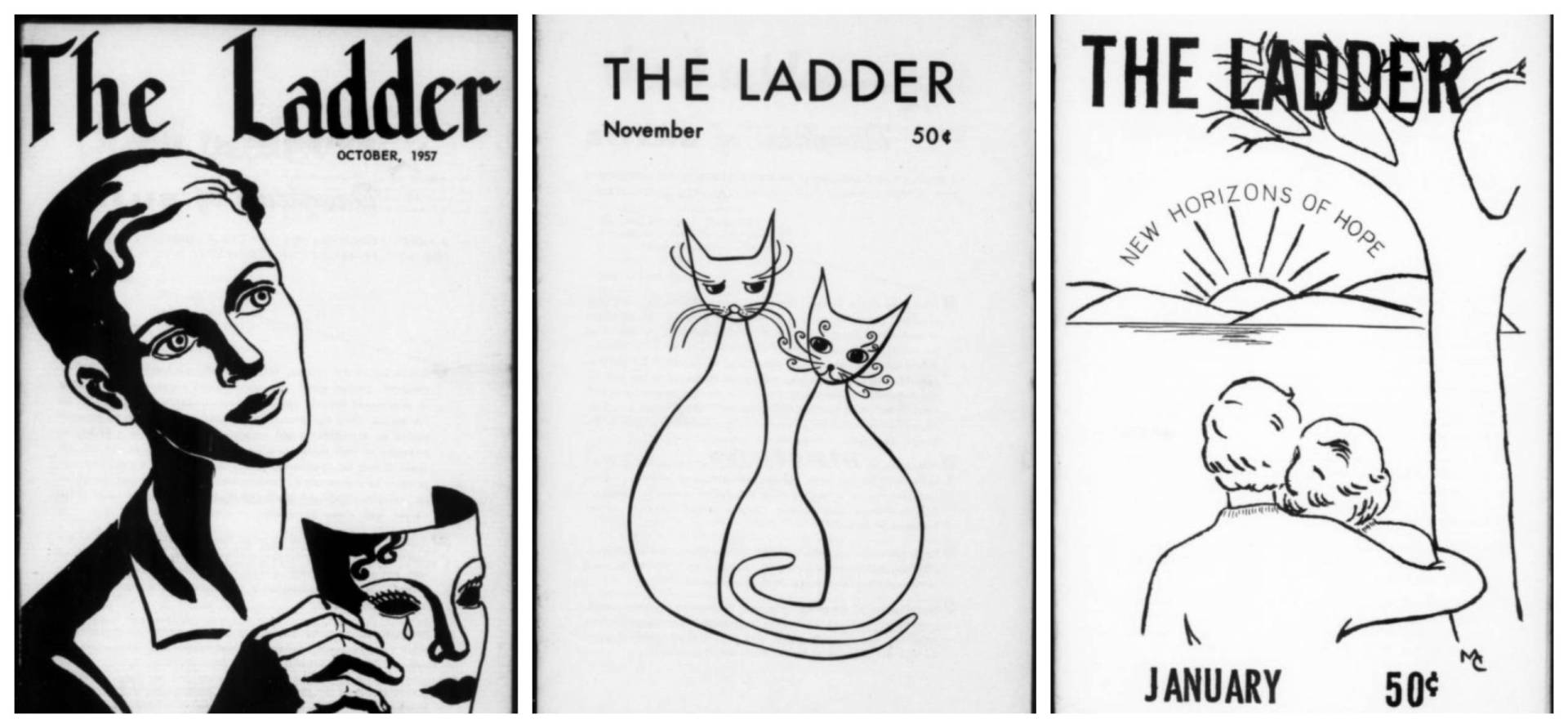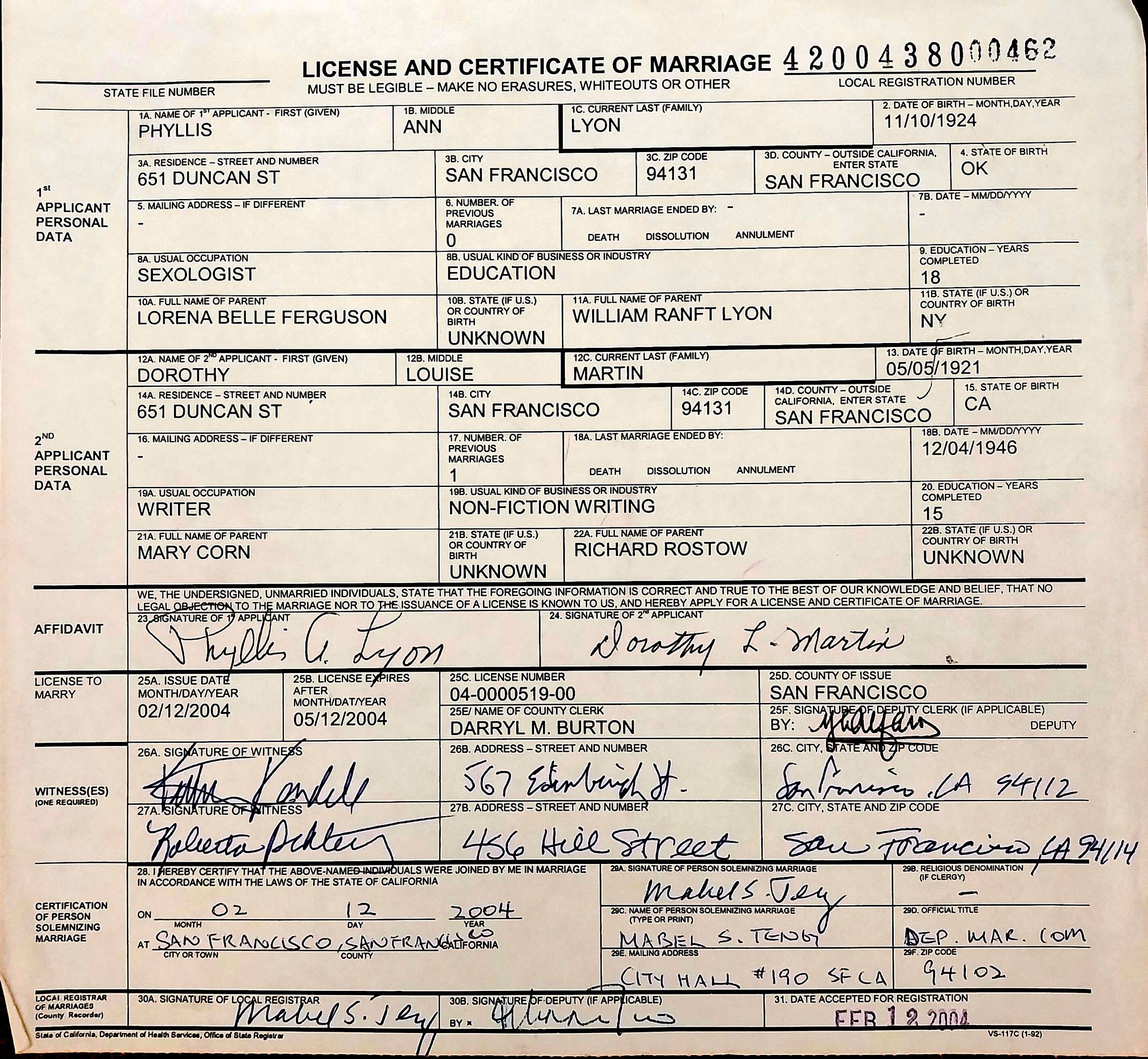And in 1960, when the organization’s first conference was held in the penthouse of San Francisco’s Hotel Whitcomb, all attendees were careful to wear skirts and dresses, lest they be accused of cross-dressing. (They were right to do so: SFPD’s “homosexual detail” showed up to see if anything nefarious was going on.) At one point, Martin and Lyon were so concerned about their office being raided and the DOB mailing list being exposed, they hid the document in the back of their station wagon.
Still, DOB persisted, acting as a support and social group, and as a source of information for its members. Even in the organization’s earliest days, Martin carried herself with an unrivaled fortitude. In 1959, she attended a Mattachine Society convention in Denver to voice her dissatisfaction with the gay organization’s attitude towards women. Pointing out that the group was 99% male, Martin announced from the stage: “Lesbians are not satisfied to be auxiliary members or second-class homosexuals. One of Mattachine’s aims is that of sexual equality. May I suggest that you start with the lesbian?”
Martin channeled that energy into her writing as well. Her first solo book, Battered Wives, was published in 1976, becoming the first American book to discuss domestic violence in depth. By then, Martin was also the first out lesbian to have served on the National Organization of Women’s board of directors. Lyon was a fellow NOW member, which made them the first out lesbian couple to join.
T
he ’70s were a time of great change for Martin and Lyon. Daughters of Bilitis and The Ladder both came to an unceremonious halt in 1970 because of intragroup politics and a couple of bad actors. Without either entity to pour their energy into, Martin and Lyon instead focused on writing Lesbian/Woman — and this time, with incredible bravery, they used their real names. A year later came Lesbian Love and Liberation: The Yes Book of Sex, a sex-positive guide that Martin and Lyon wrote to encourage tolerance, consent and frankness in the bedroom. The very first page came out guns blazing:
Yes, everyone has a right to a good sex life — including persons who have physical disabilities. Yes, sexuality is the most individualistic part of a person’s life. It is up to each individual to determine and then to assume responsibility for her or his own sexuality. Yes, sex is okay in its varying modes of expression — if people know what they are doing, feel good about it and don’t harm others.
Less than two years after Lesbian/Woman’s release, and just months after Lesbian Love and Liberation came out, the Diagnostic and Statistical Manual of Mental Disorders finally stopped defining homosexuality as a mental illness.
By 1979, the couple had established the Lyon-Martin Women’s Health Center in San Francisco — a safe space for lesbian couples to receive healthcare. “We were trying to help lesbians find themselves,” Lyon said in 1989. “I mean, you can’t have a movement if you don’t have people that see that they’re worthwhile.” (Today, the clinic is also focused on serving trans, non-binary, gender non-conforming and intersex people.)




